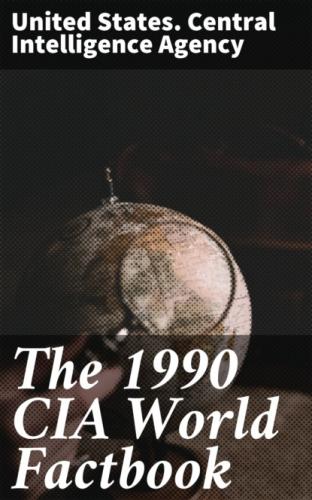GDP: $2.2 billion, per capita $1,000; real growth rate - 3% (1988 est.)
Inflation rate (consumer prices): 1.5% (1988)
Unemployment rate: NA%
Budget: revenues $382 million; expenditures $575 million, including capital expenditures of $118 million (1988)
Exports: $912 million (f.o.b., 1987); commodities—crude petroleum 72%, lumber, plywood, coffee, cocoa, sugar, diamonds; partners—US, France, other EC
Imports: $494.4 million (c.i.f., 1987); commodities—foodstuffs, consumer goods, intermediate manufactures, capital equipment; partners—France, Italy, other EC, US, FRG, Spain, Japan, Brazil
External debt: $4.5 billion (December 1988)
Industrial production: growth rate - 5.9% (1987)
Electricity: 133,000 kW capacity; 300 million kWh produced, 130 kWh per capita (1989)
Industries: crude oil, cement, sawmills, brewery, sugar mill, palm oil, soap, cigarettes
Agriculture: accounts for 11% of GDP (including fishing and forestry); cassava accounts for 90% of food output; other crops—rice, corn, peanuts, vegetables; cash crops include coffee and cocoa; forest products important export earner; imports over 90% of food needs
Aid: US commitments, including Ex-Im (FY70–88), $56 million; Western (non-US) countries, ODA and OOF bilateral commitments (1970–87), $2.1 billion; OPEC bilateral aid (1979–89), $15 million; Communist countries (1970–88), $338 million
Currency: Communaute Financiere Africaine franc (plural—francs); 1 CFA franc (CFAF) = 100 centimes
Exchange rates: Communaute Financiere Africaine francs (CFAF) per US$1—287.99 (January 1990), 319.01 (1989), 297.85 (1988), 300.54 (1987), 346.30 (1986), 449.26 (1985)
Fiscal year: calendar year
- Communications Railroads: 797 km, 1.067-meter gauge, single track (includes 285 km that are privately owned)
Highways: 12,000 km total; 560 km bituminous surface treated; 850 km gravel, laterite; 5,350 km improved earth; 5,240 km unimproved roads
Inland waterways: the Congo and Ubangi (Oubangui) Rivers provide 1,120 km of commercially navigable water transport; the rest are used for local traffic only
Pipelines: crude oil 25 km
Ports: Pointe-Noire (ocean port), Brazzaville (river port)
Civil air: 4 major transport aircraft
Airports: 51 total, 46 usable; 5 with permanent-surface runways; none with runways over 3,659 m; 1 with runways 2,440–3,659 m; 17 with runways 1,220–2,439 m
Telecommunications: services adequate for government use; primary network is composed of radio relay routes and coaxial cables; key centers are Brazzaville, Pointe-Noire, and Loubomo; 18,100 telephones; stations—3 AM, 1 FM, 4 TV; 1 Atlantic Ocean satellite station
- Defense Forces
Branches: Army, Navy, Air Force, paramilitary National People's Militia
Military manpower: males 15–49, 492,419; 250,478 fit for military service; 23,622 reach military age (20) annually
Defense expenditures: 4.6% of GDP (1987)—————————————————————————— Country: Cook Islands (free association with New Zealand) - Geography Total area: 240 km2; land area: 240 km2
Comparative area: slightly less than 1.5 times the size of Washington, DC
Land boundaries: none
Coastline: 120 km
Maritime claims:
Continental shelf: 200 meters or edge of continental margin;
Extended economic zone: 200 nm;
Territorial sea: 12 nm
Climate: tropical; moderated by trade winds
Terrain: low coral atolls in north; volcanic, hilly islands in south
Natural resources: negligible
Land use: 4% arable land; 22% permanent crops; 0% meadows and pastures; 0% forest and woodland; 74% other
Environment: subject to typhoons from November to March
Note: located 4,500 km south of Hawaii in the South Pacific Ocean
- People
Population: 18,187 (July 1990), growth rate 0.5% (1990)
Birth rate: 22 births/1,000 population (1990)
Death rate: 7 deaths/1,000 population (1990)
Net migration rate: - 10 migrants/1,000 population (1990)
Infant mortality rate: 24 deaths/1,000 live births (1990)
Life expectancy at birth: 66 years male, 72 years female (1990)
Total fertility rate: 3.5 children born/woman (1990)
Nationality: noun—Cook Islander(s); adjective—Cook Islander
Ethnic divisions: 81.3% Polynesian (full blood), 7.7% Polynesian and
European, 7.7% Polynesian and other, 2.4% European, 0.9% other
Religion: Christian, majority of populace members of Cook Islands
Christian Church
Language: English
Literacy: NA%
Labor force: 5,810; agriculture 29%, government 27%, services 25%, industry 15%, and other 4% (1981)
Organized labor: NA
- Government
Long-form name: none
Type: self-governing in free association with New Zealand; Cook Islands fully responsible for internal affairs; New Zealand retains responsibility for external affairs, in consultation with the Cook Islands
Capital: Avarua
Administrative divisions: none
Independence: became self-governing in free association with New Zealand on 4 August 1965 and has the right at any time to move to full independence by unilateral action
Constitution: 4 August 1965
National holiday: NA
Executive branch: British monarch, representative of the UK, representative of New Zealand, prime minister, deputy prime minister, Cabinet
Legislative branch: unicameral Parliament; note—the unicameral House of Arikis (chiefs) advises on traditional matters, but has no legislative powers
Judicial branch: High Court
Leaders:
Chief of State—Queen ELIZABETH II (since 6 February 1952);
Representative of the UK Sir Tangaroa TANGAROA (since NA);
Representative of New Zealand Adrian SINCOCK (since NA);
Head of Government—Prime Minister Geoffrey HENRY (since NA February 1989); Deputy Prime Minister Inatio AKARURU (since NA)
Political parties and leaders: Cook Islands Party, Geoffrey Henry;
Democratic Tumu Party, Vincent Ingram; Democratic Party, Dr. Vincent Pupuke
Robati; Cook Islands Labor Party, Rena Jonassen; Cook Islands People's Party,
Sadaraka Sadaraka
Suffrage:
